Poland offers incredible diversity in its history and landscape. From towering mountain ranges to picturesque villages, quirky homes to memorials from wars, Poland is filled with incredible and thought-provoking landmarks. Here are 20 must-see landmarks in Poland for your bucket list.
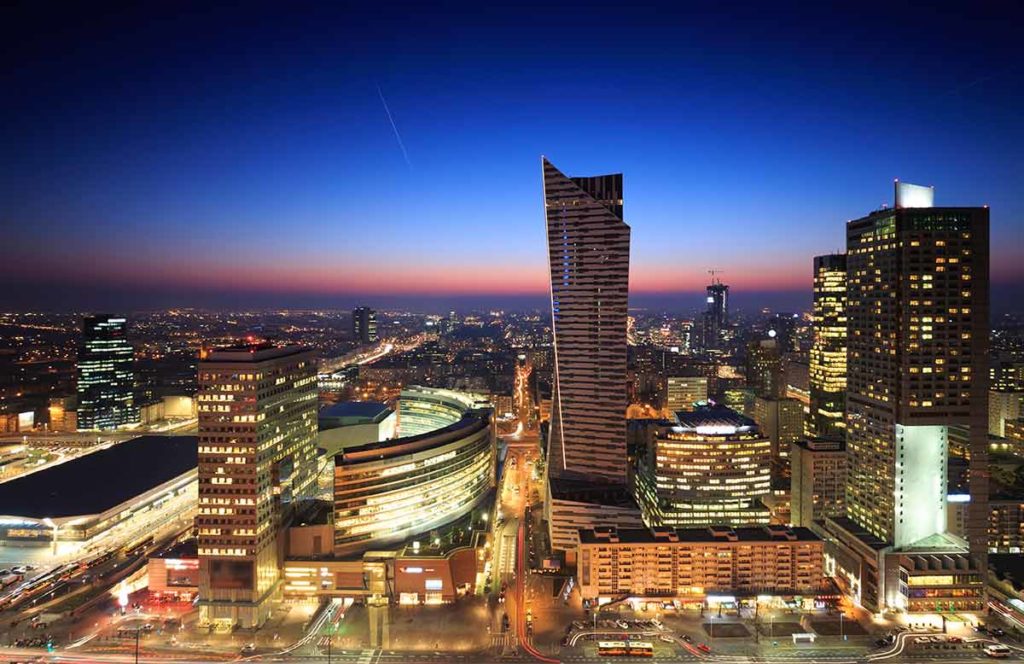
Contents
20 Incredible Landmarks in Poland
Famous Polish Landmarks
1- Wieliczka Salt Mine
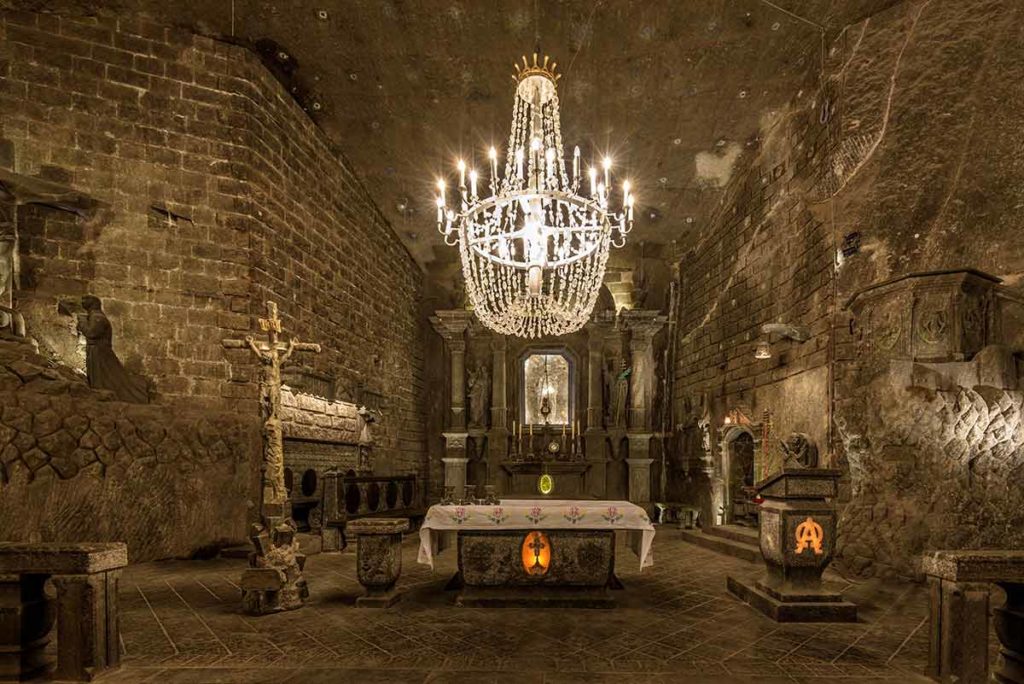
Over the last 700 years, Wieliczka Salt Mine has delved deep into the Earth to extract salt.
The deep mine is built over nine subterranean levels with 245km of galleries, reaching down to 327m at its deepest.
Only 2% of the mine is open to tourists. However, the tour route through the mine takes visitors across incredible underground saline lakes, breathtaking chambers and a labyrinth of tunnels.
A most unusual sight on the tourist tour is the St Kinga’s Chapel, which was created by three sculptor miners and filled with sculptures carved from the rock salt found in the mine.
The mine also has several chambers where events and orchestral performances are held.
2- The Churches of Peace
The Churches of Peace are the largest baroque timber churches in Europe.
The churches were built in the 1600s and took only 10 months to construct.
There were three churches initially in Świdnica, Jawor and Głogów, however, the Głogów church sadly burned down in 1758.
The churches, though simple in their design, are filled with incredible baroque paintings adorning the ceilings and walls.
They are huge, allowing for 3500 seated and 4000 standing worshippers.
Inside the Świdnica Church of Peace, there are now rare treasures on display for visitors to enjoy, including a 350-year-old bible and paintings depicting important biblical scenes.
3- The Upside-Down House in Szymbark
Built in 2007 as a tourist trap, the Upside-Down House is an unusual landmark in Poland to visit.
Designed as a comment on communist rule in Poland, the house was built and turned entirely on its head.
Inside, the home is fully furnished in a 1970s style reflecting the communist era in Poland.
Visitors can wander inside the house, walking of course on the ceiling, as they look around this unusual home.
The design commentary reflects that when communism came to Poland, it turned life upside-down.
Looking for more European landmarks? Put these on your bucket list.
For more amazing European Landmarks, read:
- 30 Spain Landmarks
- 20 Switzerland Landmarks
- 22 Germany Landmarks
- 35 London Landmarks
- 30 France Landmarks
- 20 Italy Landmarks
- 20 Greece Landmarks
- 20 Russia Landmarks
- 20 Scotland Landmarks
- 20 Ireland Landmarks
- 21 Wales Landmarks
- 20 Turkey Landmarks
- 20 England Landmarks
- 20 Hungary Landmarks
- 21 Romania Landmarks
- 20 Ukraine Landmarks
- 20 Athens Landmarks
- 20 Rome Landmarks
- 20 England Landmarks
- 20 Portugal Landmarks
- 20 Poland Landmarks
- 20 Iceland Landmarks
- 20 Bulgaria Landmarks
- 21 Croatia Landmarks
- 20 Bulgaria Landmarks
- 20 Austria Landmarks
- 21 Finland Landmarks
- 20 Sweden Landmarks
- 20 Denmark Landmarks
- 20 Belgium Landmarks
- 20 Netherlands Landmarks
- 20 Barcelona Landmarks
- 21 Czech Republic Landmarks
- 20 Landmarks in Paris
- 20 Landmarks in Liverpool
- 10 Istanbul Landmarks
Natural Poland Landmarks
4- Tatra Mountains
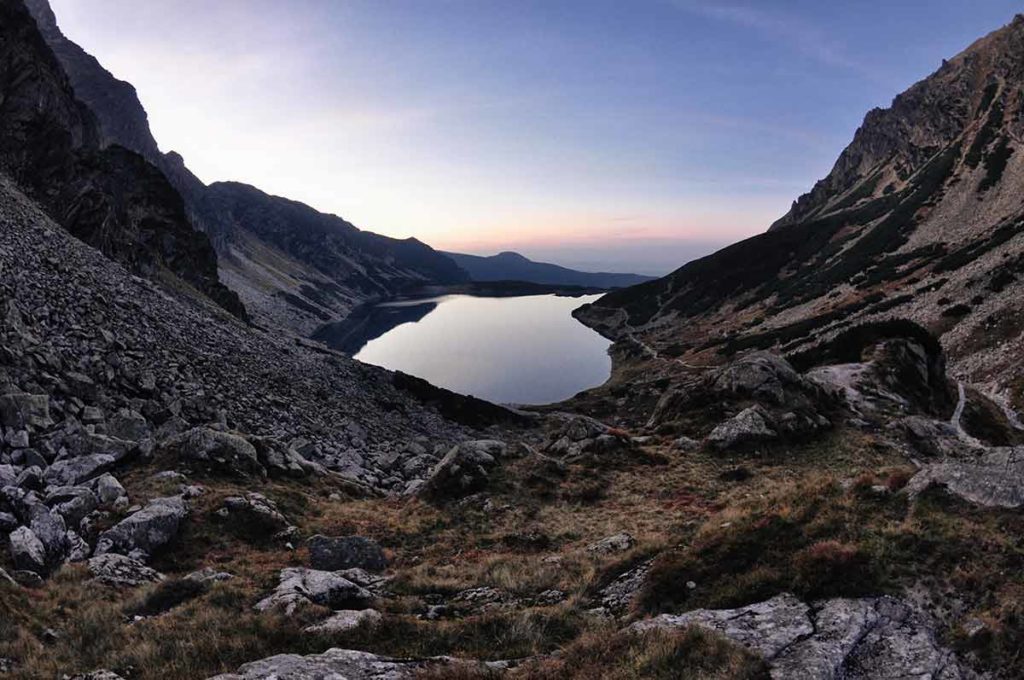
The Tatra Mountains, the highest point of the Carpathian range, form an alpine border between Poland and Slovakia.
Just one-fifth of the mountain range is in Poland. However, these mountains provide a glimpse of incredible beauty and give Poland the ranges highest summit Rysy, which stands at 2499m above sea level.
The range of the mountains situated inside Poland is home to offer 10,000 plant and animal species, giving the landscape incredible biodiversity.
Here you will find golden eagles soaring high above the cliff tops, and brown bears roaming the forests.
In this astonishing range, walkers can also find alpine lakes, waterfalls and a funicular to take weary travellers to the summit of Mount Gubalówka.
The range is walkable but you should walk with a guide to make the most of this range.
5- Dolina Pięciu Stawów Polskich
While in the Tatra Mountains, visit Dolina Pięciu Stawów Polskich or the Valley of the Five Lakes.
Said to be the most scenic valley in the mountains, Dolina Pięciu Stawów Polskich makes for a leisurely walk for solo travellers and groups alike.
The hike to the lakes and back, if visiting them all, is a full day of walking.
However, there are quaint rest stops serving traditional Polish meals dotted around the footpaths.
From its relatively high altitude, the views during the trek are stunning, and once you reach the lakes and their crystal clear waters, it is easy to see why walkers make the journey to this beauty spot.
6- Kleczanów Forest
Deep inside the Kleczanów forest lies a well preserved, and possibly one of the longest barrow cemeteries in Poland.
The cemetery has 37 preserved mounds which have been excavated by archeologists.
Findings from these digs include examples of pottery, believed to be from rituals honouring the deceased.
Archeologists believe that the oldest barrow in the forest dates from the time of the Corded Ware culture, who lived in the area from 2800-2300 BC.
The barrows and surrounding forest and meadows are open to visitors.
7- The Crooked Forest
The Crooked Forest in Gryfino has long been a source of myth and legend. Within the forest, every tree is identically bent, appearing to hover above the ground before ascending upwards forming a ‘J’ shape.
There are many theories as to why the trees grew this way, including being trapped under a snowstorm when they were saplings, to foresters manipulating their growth to get curved wood from which to make furniture.
Take a stroll through the forest and delve into the mysteries that surround these incredibly resilient trees.
8- Błędne Skały
Błędne Skały, or The Errant Rocks, are perfectly formed pathways through natural rock formations near the Stołowe Mountains.
In the 17th century, the rock formations and caverns they created protected smugglers who were travelling through the Czech Kingdom into what is now Poland.
Visitors to Błędne Skały can walk in the footsteps of the smugglers as they wind through the labyrinth of rocks.
Keep your eyes peeled for dates carved into the rocks, marking when the smugglers were captured; the oldest example of which dates from 1616.
9- Białowieża Forest
Białowieża Forest borders Poland and Belarus.
The forest is an incredible area of biodiversity and conservation and is home to the largest population of European bison in Europe.
It’s the only remaining ancient forest and as such offers walkers and explorers the chance to view some incredible flora and fauna.
The woods are home to a wide variety of wild animals, attracting wildlife photographers hoping to catch a glimpse of grey wolves and rare birds.
Historic Polish Landmarks
10- Zalipie
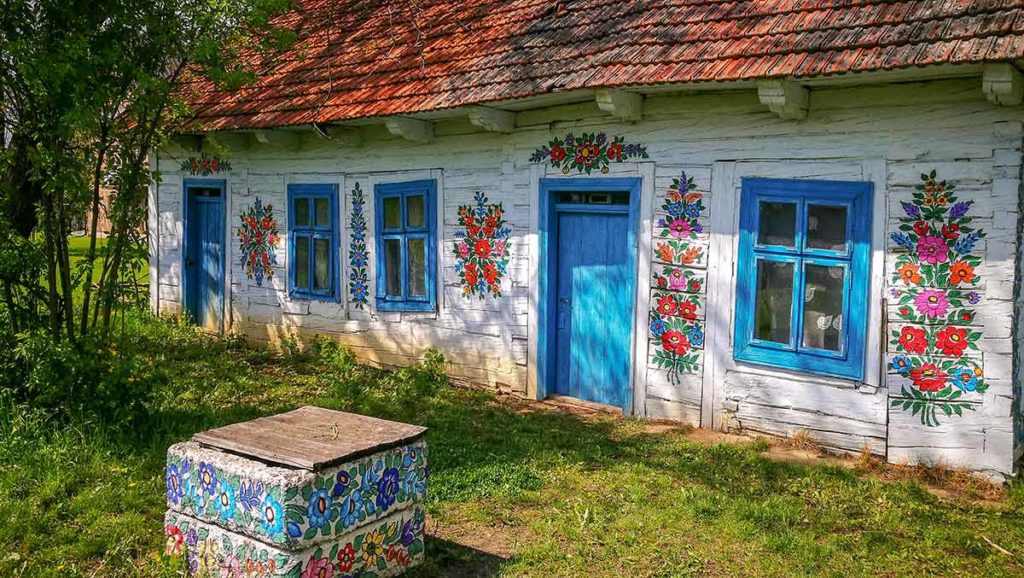
Zalipie is a small and ancient village in the south-east of Poland.
Visitors flock here to see the beautiful paintings that adorn the walls of the small wooden cottages in the town.
Started by a female resident more than a century ago, the houses are decorated with floral motifs and designs gathered from local folklore and the surrounding nature.
The pace of life is much slower in Zalipie, and is a welcome break from the bustle of the cities, as, despite its curious beauty, the village is not overrun with tourists.
Visit the museum for more information and insights into this artistic tradition.
11- Krzemionki Opatowskie
The flint mines of Krzemionki Opatowskie date from Neolithic times, and have been perfectly preserved over the last 5000 years.
The mines were discovered in 1922 by a geologist, who found that there are approximately 4000 mines within the area.
Visits to the mines offer a step back in time where visitors can learn about prehistoric settlements, cultural traditions and the importance of flint mining for the area and human evolution.
Visitors can also venture inside the mines, which have been excavated to allow walks through the mine and view protected areas through windows.
The museum houses relics discovered in the excavations, as well as model examples of how the miners may have lived.
12- Sukiennice
Kraków’s Cloth Hall, Sukiennice, has stood in the centre of the Old Town since the 14th century.
The hall is designed in Renaissance style, following a rebuild after a fire in the 16th century.
It was originally designed for the sale of cloth and where merchants traded, however, today Europe’s oldest shopping centre is filled with a wide range of stalls selling souvenirs and local products, and a museum dedicated to the history of the building.
As it’s in a bustling square, take some time to admire this exemplary building from one of the squares many coffee shops.
13- The Crane, Gdańsk
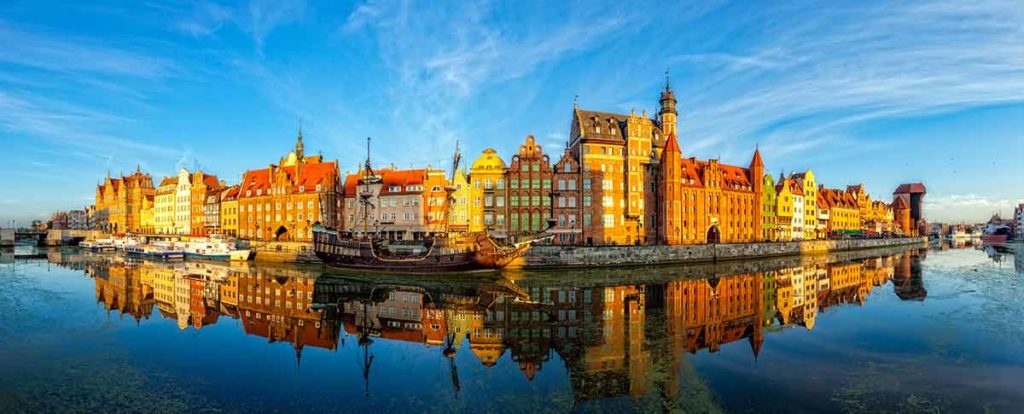
In the seaside town of Gdańsk sits an incredible feat of engineering and architecture; a wooden crane built in the 1300s.
The crane was designed to ease the loading and unloading of cargo from ships docking in the port.
Sadly much of the original crane was lost in a fire, and the rebuild from the 15th century was partially burned during World War II.
The crane today was rebuilt in the 1950s and is no longer operational.
The building now houses a maritime museum, where visitors can learn more about the shipping port and the use and design of the crane.
Within the museum is a glass door which allows visitors to see the mechanisms of the crane.
14- Town Hall, Poznań
The town hall in the picturesque town of Poznań is another example of Renaissance architecture in Poland.
It has a 61m high clock tower which is a particular draw, as it features two metal goats appearing through its doors each day at noon.
The goats lock horns as if they are rutting as a reference to a local legend.
The square in which the hall is situated has colourful buildings decorated with flowers.
The Great Entrance Hall features an expansive vaulted ceiling resting on pillars and is decorated with works of Renaissance art inspired by mythology and astrology.
The town hall is now a museum and is open to the public.
15- Palace of Culture and Science in Warsaw
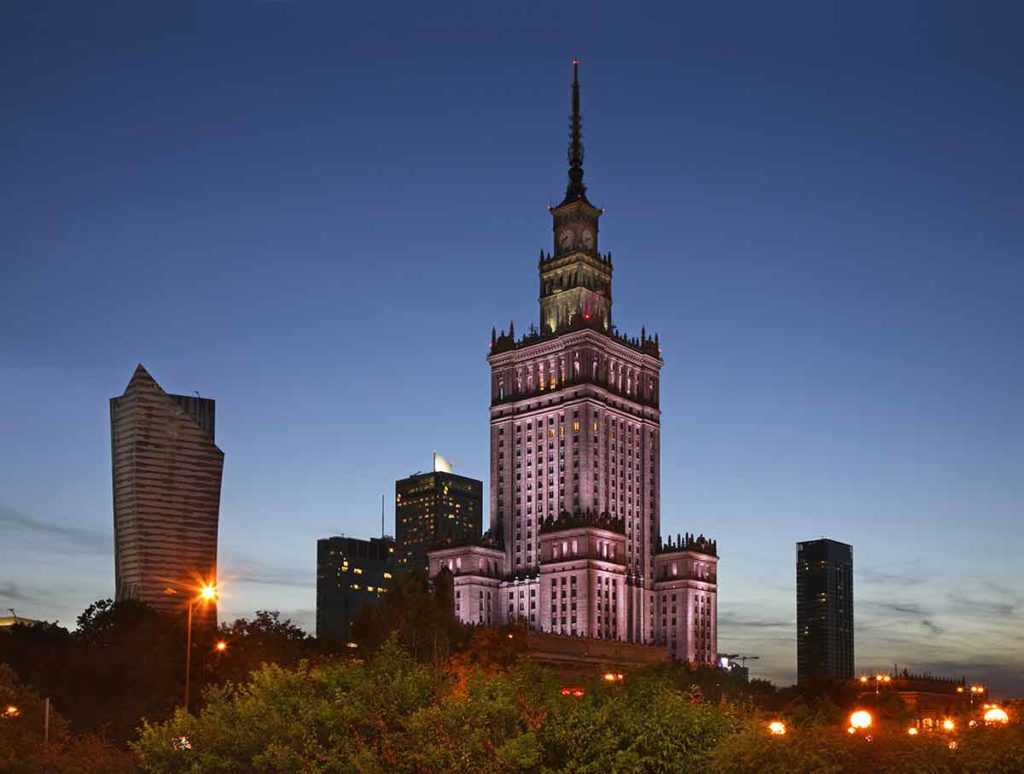
The tallest building in Poland, the Palace of Culture and Science was a gift to Poland from the Soviet Union in the 1950s.
The building has incredibly grand internal architecture, and visitors can explore it through guided tours.
The building itself is an education facility and recreation complex and houses theatres, cinemas and museums.
Perhaps its most alluring feature is the observation deck, from which visitors gain extensive views over the city.
16- Malbork Castle
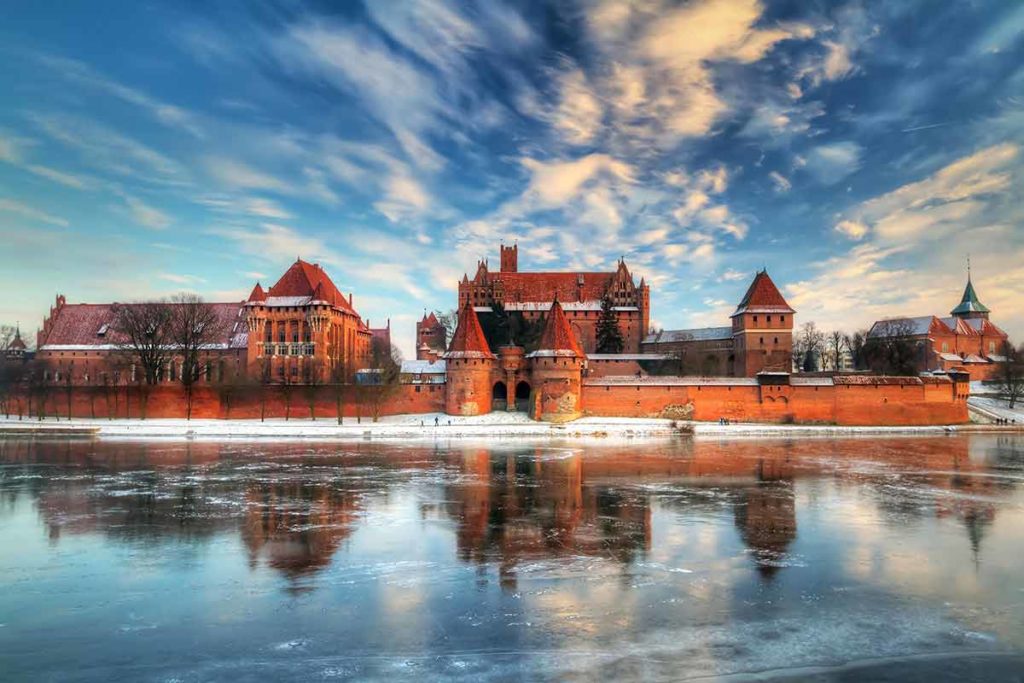
Traditionally named the Castle of the Teutonic Order in Malbork, Malbork Castle is a 13th-century fortified monastery.
The castle itself is constructed from deep red brick giving it an unusual look in comparison to other castles in the area made from lighter stone.
During the time of the Teutonic Order, the castle was a place of modern philosophy.
Malbork Castle has undergone significant restoration works from the 19th century to today, and by doing so, several historical remains and medieval craft techniques have been rediscovered.
Sadly the castle was, like many historical buildings in Poland, badly damaged during World War II. However, it has since been restored extensively.
Visitors can wander the castles great halls and fascinating rooms with the assistance of detailed audio guides that use GPS to ensure each room can share its story.
17- St Mary’s Basilica
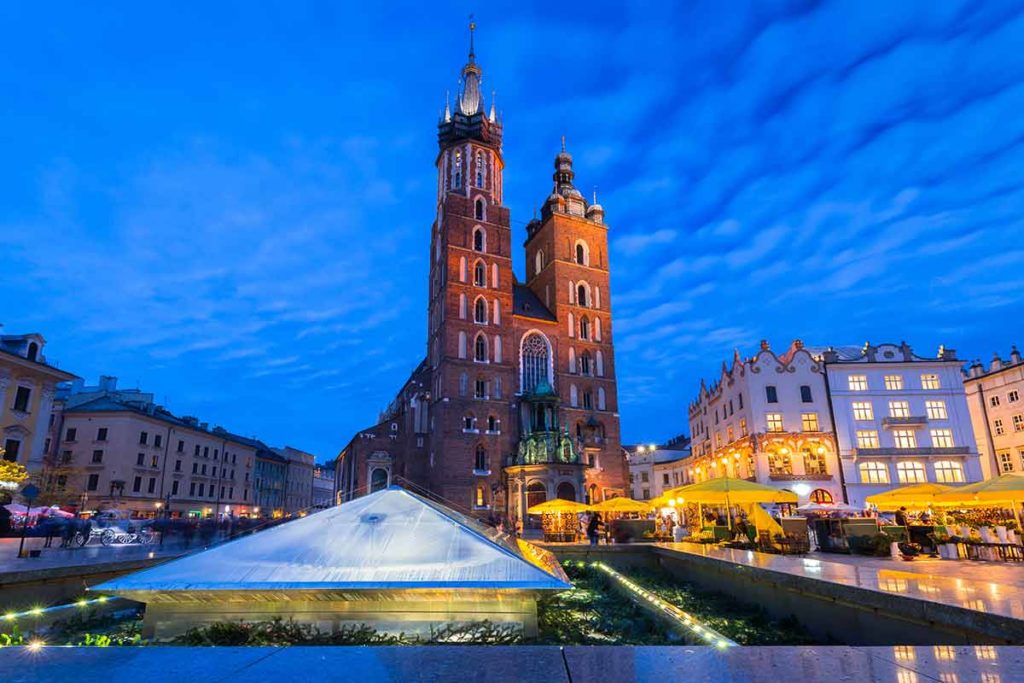
St Mary’s Basilica in Kraków is a grand red brick church, with two towers of differing heights.
The church is still open for worship, and as such tourists enter through another doorway to avoid disturbing the services.
Within the church is a stained-glass window from the 14th century, and more modern examples of glasswork influenced by art nouveau.
The walls are adorned with colourful paintings providing the background for the wooden carved high altar.
During the summer months, the towers are open for tourists to climb and view the city from above.
18- Wawel Cathedral
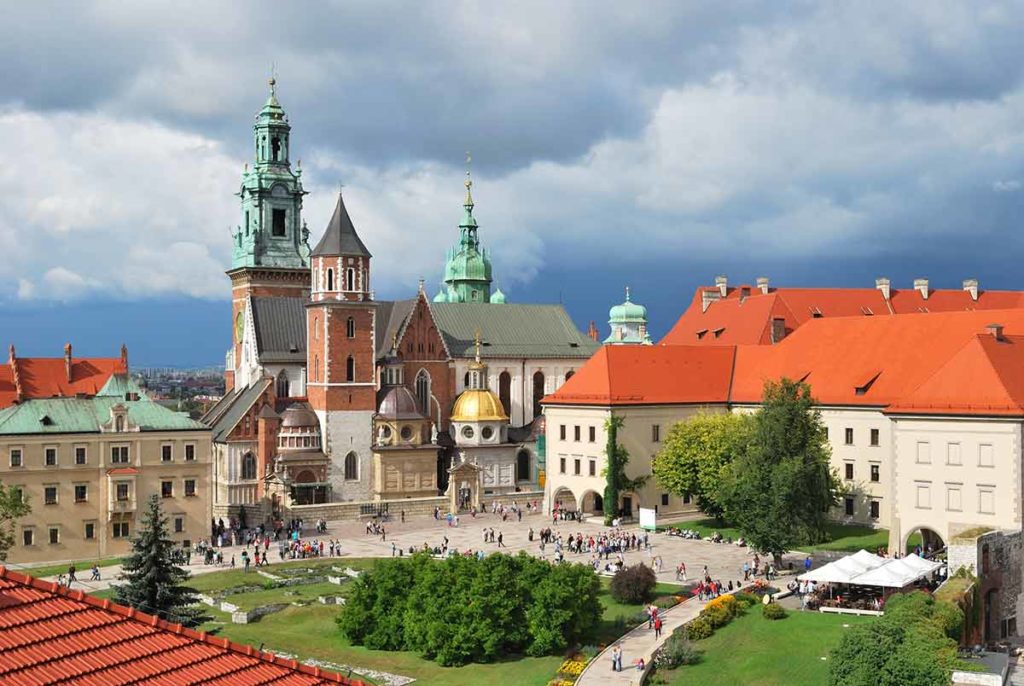
First established on the site in the year 1000, Wawel Cathedral in Kraków has grown into one of the most famous religious sites in Poland.
The cathedral was the home of coronations for Polish rulers until the church was severely damaged in a fire in the 1300s.
The following centuries influenced the design of the cathedral, with signs of the Renaissance still visible today.
In 2000, the cathedral’s stunning guilted facades and artworks were renovated and restored to their former glory.
Today, the cathedral is still open for services and offers guided tours around some of the cathedral’s most important collections.
19- Łazienki Park
Previously King Stanisław August’s summer home, The Royal Łazienki and its surrounding park is a picturesque stop on your tour of Poland’s landmarks.
One of the main attractions on the grounds is the Palace on the Isle, which is home to the Royal Picture Gallery and the Royal Sculpture Gallery within the Old Orangery.
It’s the parks ornate gardens that capture the imaginations of visitors.
With gardens influenced by 20th-century modernist artworks and sculptures, and a Chinese garden complete with pavilion and authentic plant life, they are worth a stroll through.
Look out for the gardens resident peacocks as you explore.
20- Auschwitz-Birkenau
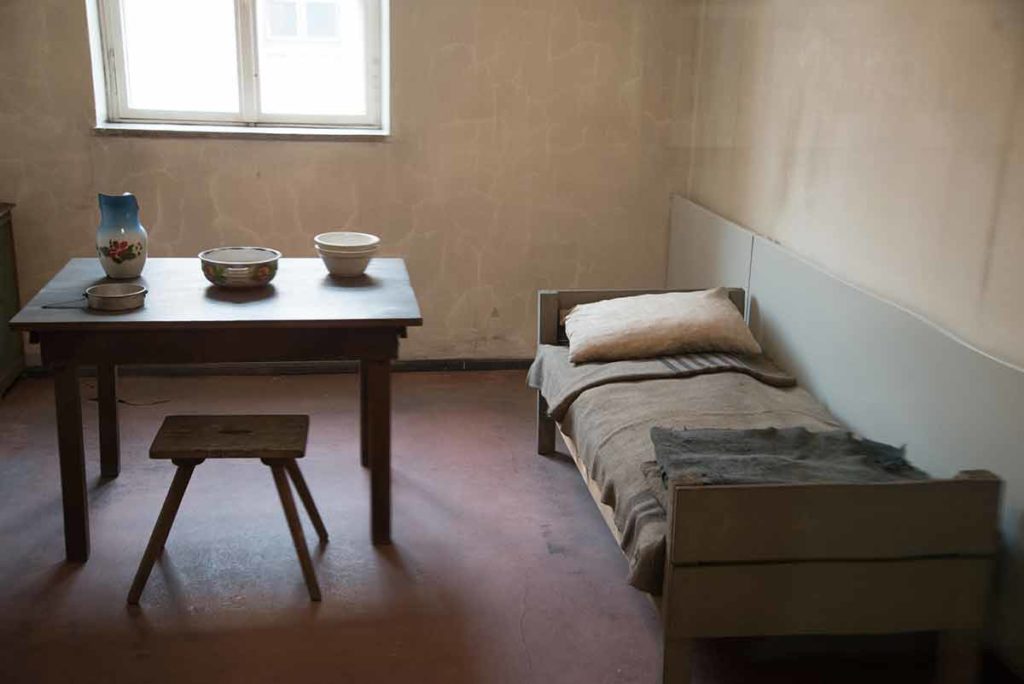
The most infamous part of Poland’s history in World War II is Auschwitz-Birkenau.
What was once the site of one of the most horrific genocides in recent years, Auschwitz-Birkenau is now a museum to educate visitors on the camp, and a memorial to remember those who lost their lives here.
The camp has been protected since 1947 to ensure the relics are preserved to share with future generations.
Visit with a guide to truly understand the impact the camp had not just on the war, but on humanity itself.
More Landmarks in Asia:
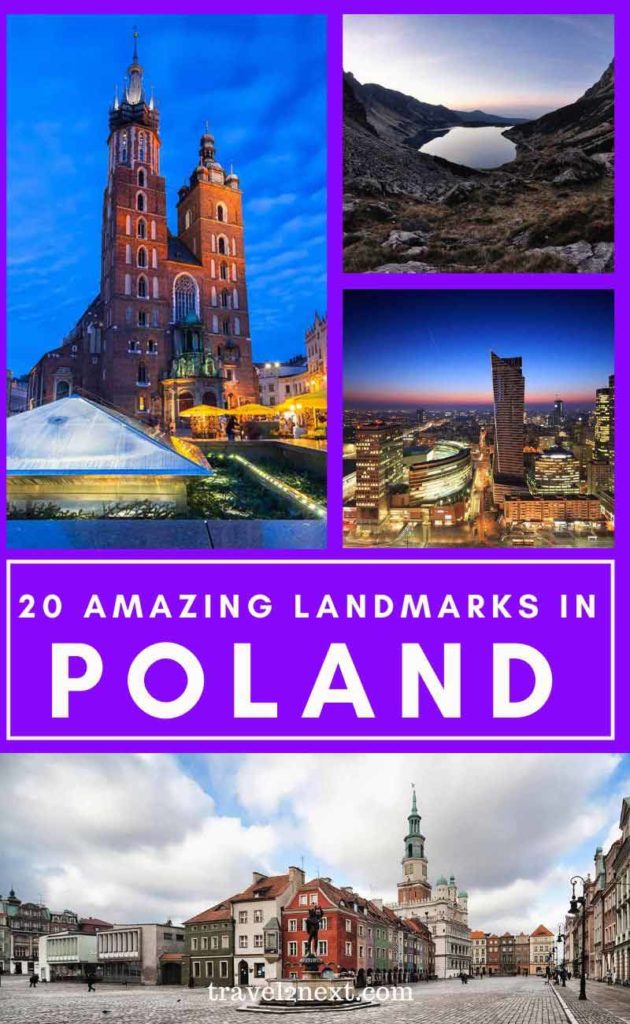
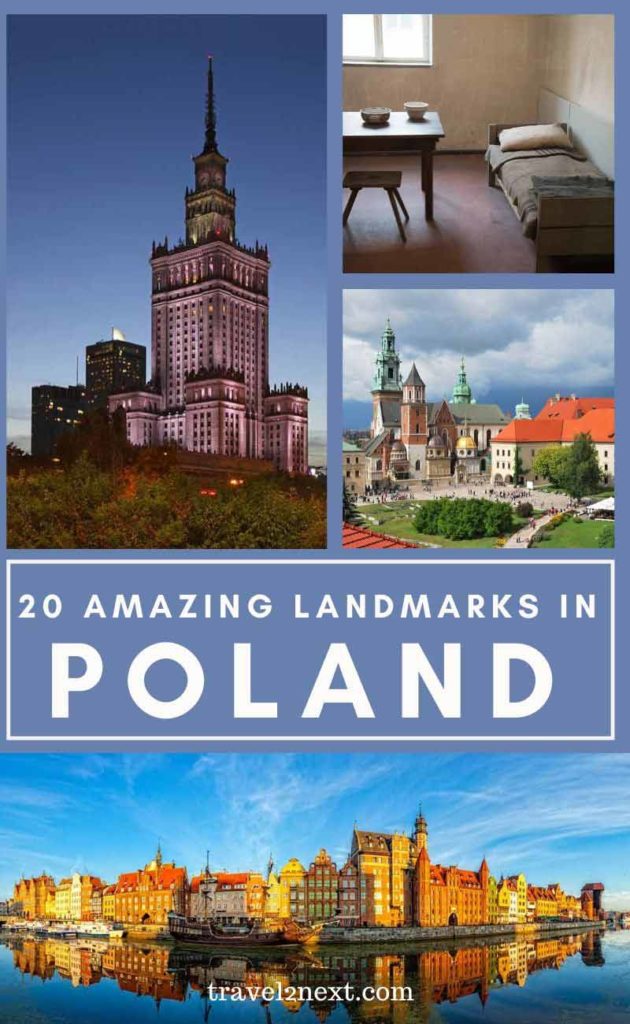
Plan Your Trip

Rent A Car – Find the best car rental rates at Discover Cars. They compare car hire companies to provide you with the best deal right now.

Find A Hotel – If you’re curious about this article and are looking for somewhere to stay, take a look at these amazing hotels.

